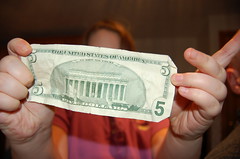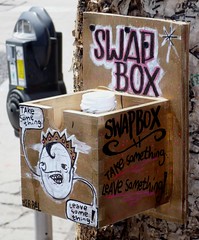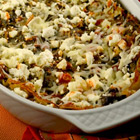 This is my 497th post. I'm still deciding what to do for the big 5-0-0, but for the few posts leading up to it, I'm going to look back at some of my previous posts. Please indulge my reminiscing.
This is my 497th post. I'm still deciding what to do for the big 5-0-0, but for the few posts leading up to it, I'm going to look back at some of my previous posts. Please indulge my reminiscing.I know we're supposed to believe that the economy is getting better. Perhaps it is on it's way up, and I just don't know how to read the signs. But most of the people I know, including my family, are looking for ways to spend less money and save money on the things they have to spend it on.
So I thought I'd go back and find some old posts that talk about saving money while being green. Here are a few that you might find helpful.
Staying green during the (possible) recession - Yep, this one was written a year and a half ago, when many of us were still in a bit of denial. It deals with stretching your grocery budget.
5 ways to be greener today that will save you money - 5 things you can to today, right now, with little effort.
Buying local at the peak of season saves money - Considering we're in the heart of summer and local foods are abundant everywhere, this is a very relevant post.
Going greener with your music can save you money - Tips on finding inexpensive or free legal music and downloads.
Host a swap and save money - "One man's trash is another man's treasure" and a swap can help you get rid of your unwanted items and get things you need or want without spending a dime.
10 easy ways to be more sustainable with your clothing - These tips will help you save money on new clothes while extending the life of the clothes you have
5 reasons to dig into your pantry - You've got food in your pantry that you've already paid for, why not use it?
Reduce, reuse, recycle: Packing and shipping items - If you're a careful saver, you should never have to pay for shipping products again.
Coupons for organic and natural foods are out there - Coupons for the organics and naturals aren't as plentiful as say coupons for Hot Pockets, but they are out there.
And please, before every female Gen-X'er who reads this post tells me that the photo doesn't match the quote, I know it doesn't. I couldn't find a photo of the right scene.


















